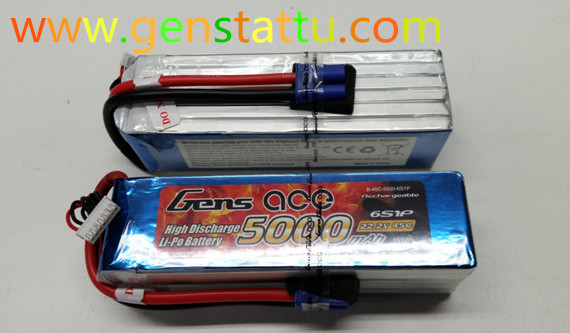A balance connector is nothing more than a breakout connector for accessing all the individual cells contained in a lipo. This allows for the monitoring and manipulation of each cell individually.
Why are balance connectors needed?
Like everything in the world, no two things are exactly the same, and batteries are no different. When multiple batteries, or cells, are assembled into packs, those different differences can lead to imbalances within the pack. In most cases, like NiXX cells, this is not a problem due to the chemistry of the cells. But when using lithium based cells, these imbalances can damage the cells and in some extreme cases even result in a fire.

The age of lipos
As of right now there are single lipos ranging from gens ace lipo 1s 80mAh to 12s 6000mAh lipo, with C-ratings ranging from 15C to 65C. These lipos power a huge range of models from micro helicopters to 33% planes. What used to be a simple answer, "Use Deans Ultra Plugs", has now become a little more difficult to answer.
LiPo Battery Connectors and Types
Bullet Connectors
Bullet connectors are many times the stock connector attached to LiPo batteries, especially larger LiPo batteries. These connectors can handle a lot of current but have the tendency to pull apart during hard landings or through rough usage. If you plan to leave the bullet connectors that came with the LiPo battery on, be sure to purchase the correct size to match. For example, this 5000 mAh 3S 25C LiPo from Gens Ace lipo comes stock with a 4mm bullet connector.

Deans T-connectors
This is the original t-plug connector. This was the first heavy duty plug that I felt comfortable using on everything. These were purpose made for the RC industry. You can find the authentic W.S. Deans Ultra Plug and these days there are clones of this design. I have found many of the clones plastic will melt if you get your soldering iron too hot when attaching your wires. The main issue with this plug is that they are a little tricky to attach wires to since they are simply flat. If your wires are very thick (larger than 12awg) then they are really tricky. They will also pop when you connect them if you are using a big lipo. This doesn't bother me personally but some folks find it unnerving.
Deans Connector Battery Recommendation
This is the 7.4V lipo battery 5000mah With Deans Connector. This battery is perfect for any Airsoft soldier who is looking to add more power to their weapon! You can never go wrong when you choose a Li-Poly battery, not only do they last long, and they hold a stronger charge but they also come with outstanding quality. So whether you are getting a replacement battery or an extra battery for your favorite Airsoft gun the 7.4V 1800mAh Lipo Battery With Deans Connector is the perfect choice for you!
XT60
These are rated for 60 amps. I first starting seeing XT60s on Gens Ace lipos. This seemed to be their alternative to t-plugs. These consist of 3.5 mm bullets that are shrouded with plastic. There is a male and female side. The great part about this plug is that the side you solder to is cupped. It will hold your solder and your wire a lot easier than a Deans plug. The other advantage is that a lot of batteries ship with this connector. That means all you have to do is create some corresponding connectors for your charger/RC vehicle and you are in business. Since I was already Dean based I never migrated to this style of connector. Disconnecting them can also be a little tricky. I will say that if I was to change to a new connector this would be the one. Most of my quads use this type of connect. Most I have cut and switched to Deans but I have also made adapters.
EC3
The connectors on this plug are fully shielded. Connecting the EC3 isn't confusing and once connected they stay connected. These are also very easy to solder together and no heat shrink is required. My reason for using them might sound silly. Separating them is a bit of a pain. When you do separate rate them the suction between the two makes a POP sound. I'm not sure why I find this off-putting. Maybe I feel like I'm straining the solder since they are so tough to separate. I have never used this type of connector for very long. Ultimately I cut them and change over to Deans.
What is the best battery brand?
Gens Ace batteries are one of the top LiPo battery manufacturers around in terms of performance and quality in general. However if you are are after some professional level batteries I can highly recommend the Gens Ace TATTU series of Lipos. These Gens Ace lipo batteries are abit more expensive that other brands, but they are worth paying abit more for, especially if you are carrying expensive equipment on your drone.


















